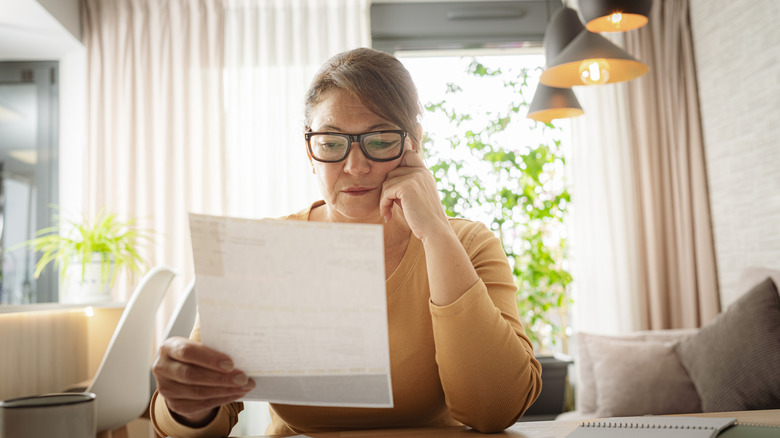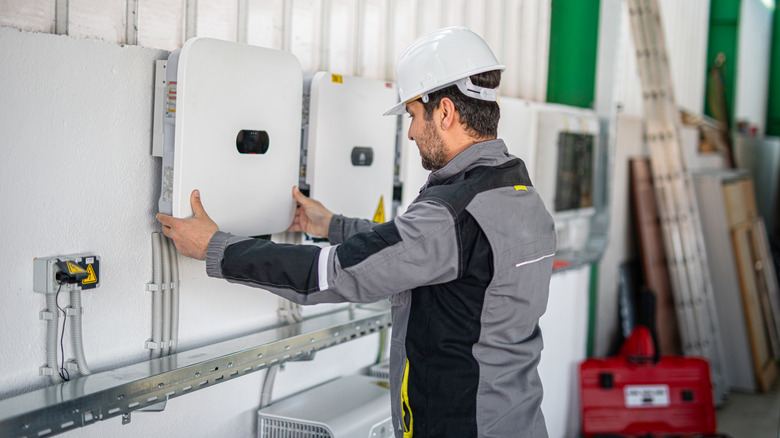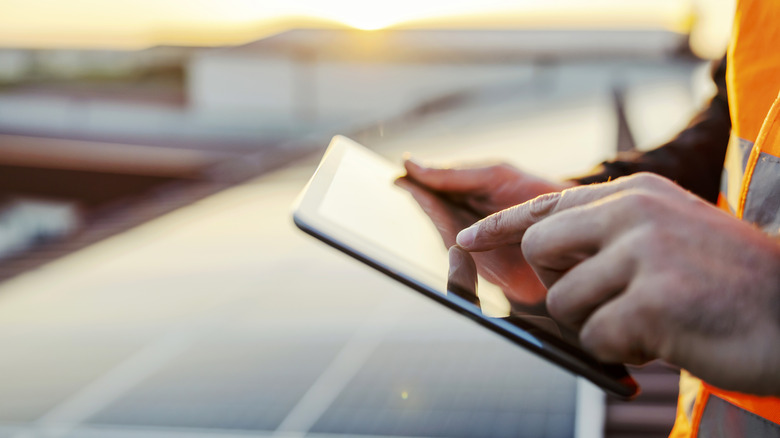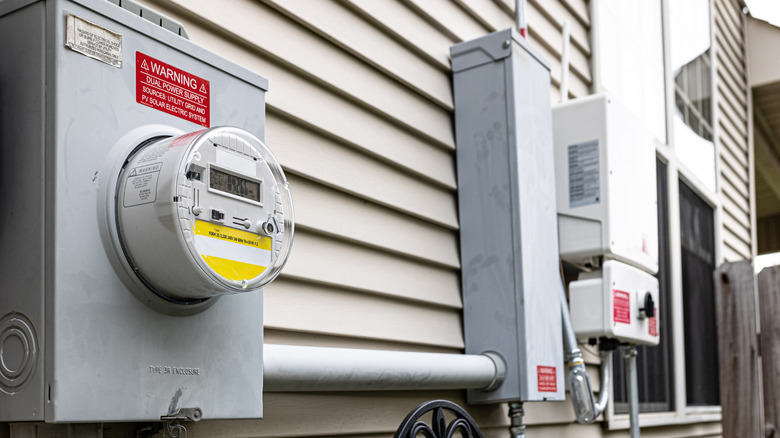5 Common Mistakes To Avoid When Considering Solar Panels For The Home
No one is immune to the sticker shock of the power bill. Energy costs keep rising, and not paying isn't an option. It's good news for solar companies: High electricity prices are pushing more customers their way. But before you go all in on solar panels for the home, you'd be wise to do a bit of research. While solar is arguably cheaper, money isn't the only factor that matters.
The idea of not having a power bill sounds appealing, but solar energy isn't free. Many homeowners who have gone the solar route claim there are hidden costs involved. They take a while to install. You might not see an ROI instantly. You also have to maintain the panels to continue generating power (and returns on your investment). In short, it's not the end-all solution you might think. However, the long-term cost savings make it a viable option, as long as you're prepared for the whole process and not just a lower power bill. Here are five common mistakes to avoid when considering solar panels for the home.
Assuming you'll see an immediate roi
Many people assume that once they start using the power of the sun, they'll see immediate savings in the form of a lower energy bill. That part is true. But it doesn't exactly equal a return on investment. The average ROI on solar panels is about 10%: This means that for every $100 spent, you make about $10 a year in profit. According to Forbes, a 6-kilowatt solar system saves an average of $1,500 per year compared to a normal energy bill.
Those are noticeable savings, but you also need to consider what you spent to start saving that much money. Solar panels aren't exactly cheap; A large 10-kilowatt system costs about $29,000 when installed by professionals, though this doesn't account for any potential tax credit or rebate. Also, location may play a factor in pricing. Cheaper options exist, such as leasing the solar panels instead of owning them outright or using DIY solar panel kits. Either way, you're looking at several years of use to break even. The frontline savings on your energy bill only tell part of the story.
Failing to assess how much energy your home needs
Different homes have different requirements for things like heating, air conditioning, septic tanks, and water heaters. The same is true for solar panels. Every major system or appliance is chosen based on the size of the home and the average number of occupants. The larger your home, the more power it will consume. If you're working with a solar panel company, they'll handle most of the heavy lifting. Your job is to think about your current needs as well as plan for the future. Thinking long-term now ensures your system will continue to meet your needs. This way, you don't end up with a solar system that's too small (and won't give you enough power) or too large (which will cost more and delay your ROI).
To get the right size, tally up your power usage for the last 12 months. Divide that number by 12 to find your monthly average usage. Divide again by 30 to find your daily average. You'll also need to find your daily sunlight exposure to see how much power you can realistically generate during daylight hours. To do this, use a tool like NREL's GHI map to see how many sunlight hours your home receives. Then divide the average daily power consumption by the number of daylight hours. Your panels will need to generate this figure at a minimum; It's a good idea to generate a little extra, since panels degrade over time.
Not shopping around for the best solar solutions
Just like you'd shop around for cars or insurance, you should also explore different solar panel vendors. Prices vary by company and could help you save more money than you realize. While the average solar panel system for a home is about $29K, they have a wide price range. Pricing can depend on several factors, including where you're located, the size of your home, and the number of panels you need. There's also the matter of installation: Some companies are sales organizations that outsource the installation to professionals, while others have their own installers. Installation complexity plays a role in cost, as well as the type of solar panels you choose. The more panels you need, the more you can expect to pay for installation.
If you plan to finance your solar panel investment, you'll need to account for financing charges. These are baked into the monthly fee you pay to the solar company, but they can vary between providers. Finally, any warranties or service plans offered by the solar company will have a direct impact on the total cost of your investment. For example, if you have to pay for an annual inspection, this can add to the total cost. Some companies might offer incentives, like extended warranties or free service plans for a certain number of years, which can help lower your future costs.
Not factoring in maintenance costs
Just like your HVAC system or electrical wiring, solar panels last long, but not forever. At some point, they will require maintenance. Parts might need to be replaced. Both of these will cost money. They're unavoidable, but you can avoid any expensive surprises by anticipating maintenance costs before you invest.
Your installer or sales company can provide more details about how they maintain and repair solar panels. They can share potential costs and even estimate how often parts are likely to break down and/or need to be replaced. For example, your inverter might need to be replaced every 10 years or so, depending on the type of inverter. In general, maintenance is usually minimal. Solar panels will need to be cleaned about once per year (or more, if you live in windy or dusty areas), but this is something you can probably do yourself.
Ignoring the fine print on net metering
Installing solar panels on your home doesn't put you completely off the grid. At best, it makes you a "prosumer": You both produce and consume power. When you make a surplus of power, you sell it back to the electric company. And when you don't produce enough electricity, you feed off the same power company you're already using and pay them for it. This results in a net metering deal. The best case scenario is that you store up credits when you overproduce so that you can use those credits during low-production months.
However, the power company might charge more during those dry months than it will pay you for the extra power you produce. This basically means you only get the full value of your solar power when you use it immediately. And in some cases, electric companies might have a cap on how much credit you receive. Some homeowners install battery subsystems to "bank" their extra power so they can use it when they need it. This adds to the cost and might not make sense for all cases. Your best option is to do the math. Find out your unique buy-and-sell arrangement with your local power company and run the numbers so you can set realistic expectations.





